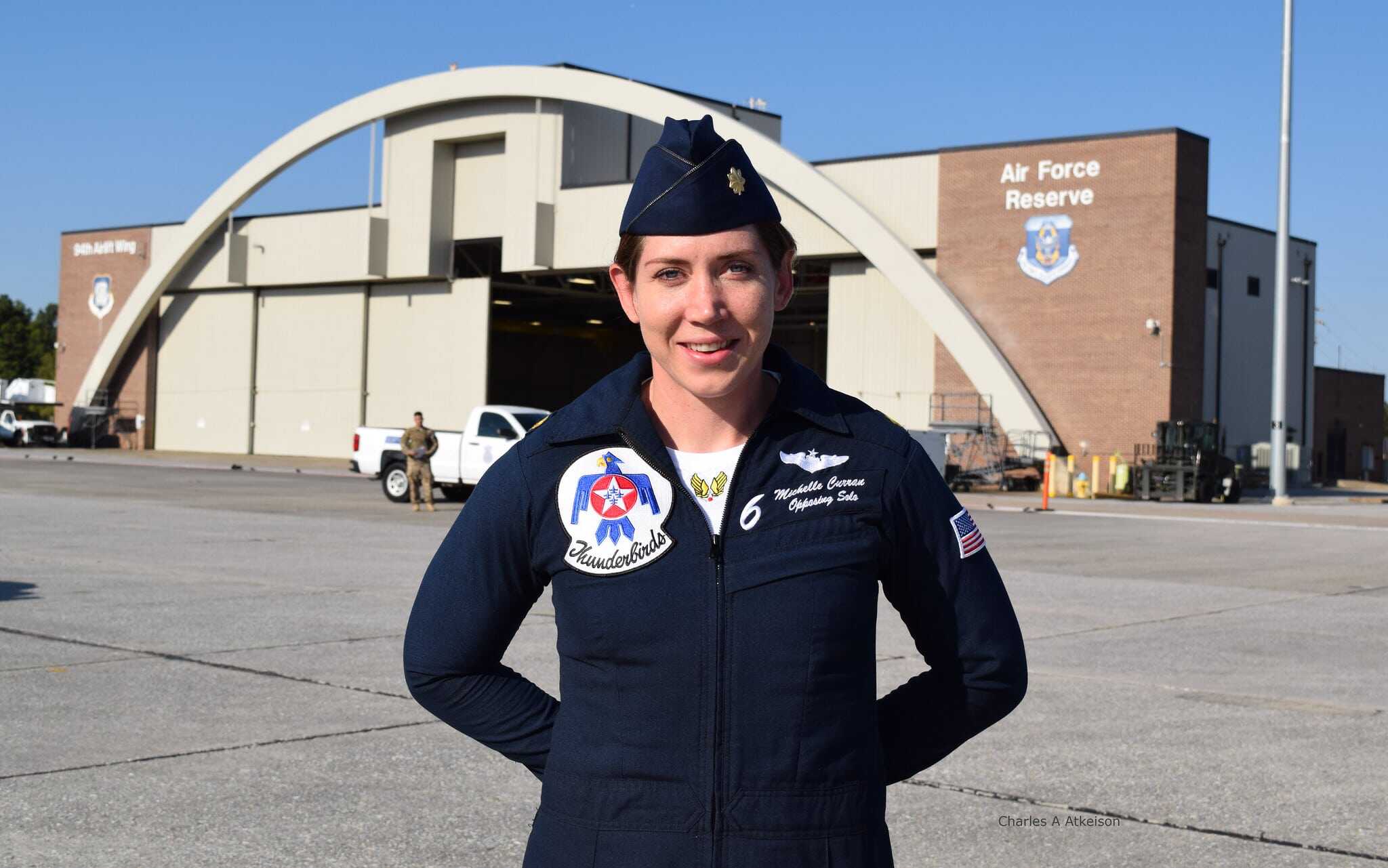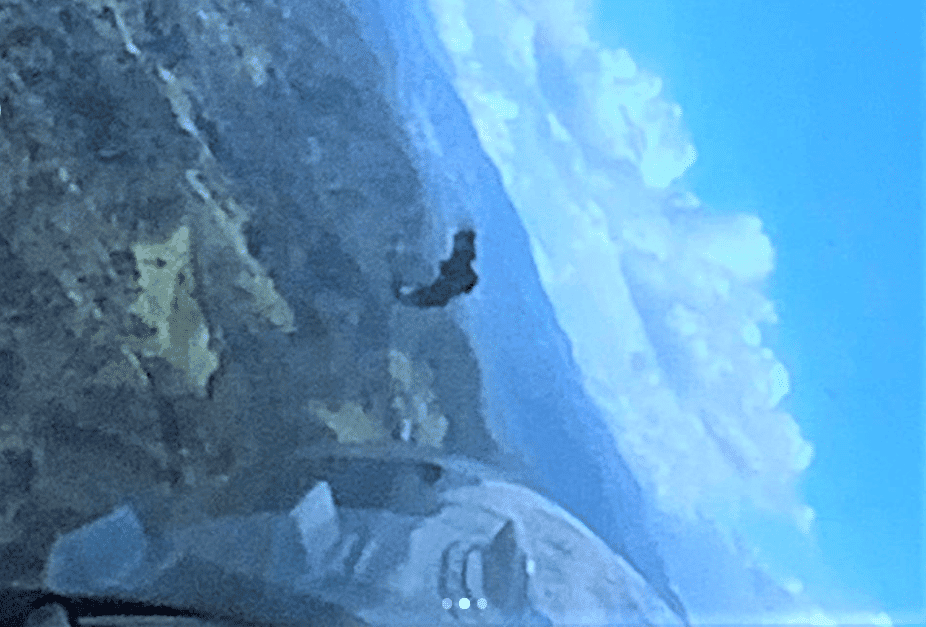NELLIS AFB, NV — An Air Force Thunderbirds jet was struck by a massive bird last summer, punching multiple holes in the fuselage and forcing the pilot to terminate a flight demonstration.
Major Michelle “Mace” Curran opened up on Monday about what she calls her scariest flight. A former F-16 Viper instructor pilot, her skills behind the stick helped her handle the jet in an emergency situation and land safely.
The Thunderbirds were performing a practice flight demonstration in Colombia, South America on July 12, 2019, when a bird hit her F-16C Fighting Falcon. Two fist-size holes punctured the port side of the aircraft.

“Last year during our Friday practice in Colombia, I had a fairly major bird strike,” Curran, who at the time served as the opposing solo pilot, began to discuss in a post on social media. “There was no chance for me to see and avoid this bird.”
As Mace piloted her Thunderbird 6 jet behind the air show crowd, she caught a quick glimpse of the dark bird. She was about 2,000-feet high and traveling 450 knots when the strike occurred that afternoon.

“I saw a big flash of black go under my nose and heard and felt the impact.” she continued. “I immediately requested to terminate the practice and land. The jet handled normally and the engine didn’t falter.”
The jet touchdown back at its origination point and site of the air show in Rio Negro. Known as F-AIR Colombia Trade and Air Show, the Thunderbirds had arrived two days earlier as guests and the headline performers.
Once the jet was parked and the engine shut down, Mace described her shock when her crew chief climbed up the ladder to greet her. In his own shock and disbelief, her crew chief SSgt. Dylan Stefani broke the news that she had “two giant holes” in her jet.

Both Curran and Stefani then walked around the jet surveying every inch.
“We were all in disbelief that a bird could punch holes clean out of the aircraft,” Maj. Curran added. “The metal pieces were actually later found inside the jet.”
Later that afternoon, the Thunderbirds maintainers went to work with local Colombian military support to patch the holes using sheet metal. The maintainers later discovered feathers in the jet’s single engine prompting them to replace it.

“Everyone burned the midnight oil and I flew two shows in a spare jet,” she said. “(The pilots) might get all the attention, but the team behind us works miracles to make the shows happen.”
Today, Curran is an Air Force Major and will serve her second year with the Thunderbirds. She is also the team’s second female lead solo pilot in the team’s 66 year history.
(Charles A. Atkeison reports on aerospace and technology. He has flown with the Thunderbirds, and has interviewed Maj. Curran on two occasions. Follow his updates via social media @Military_Flight.)
